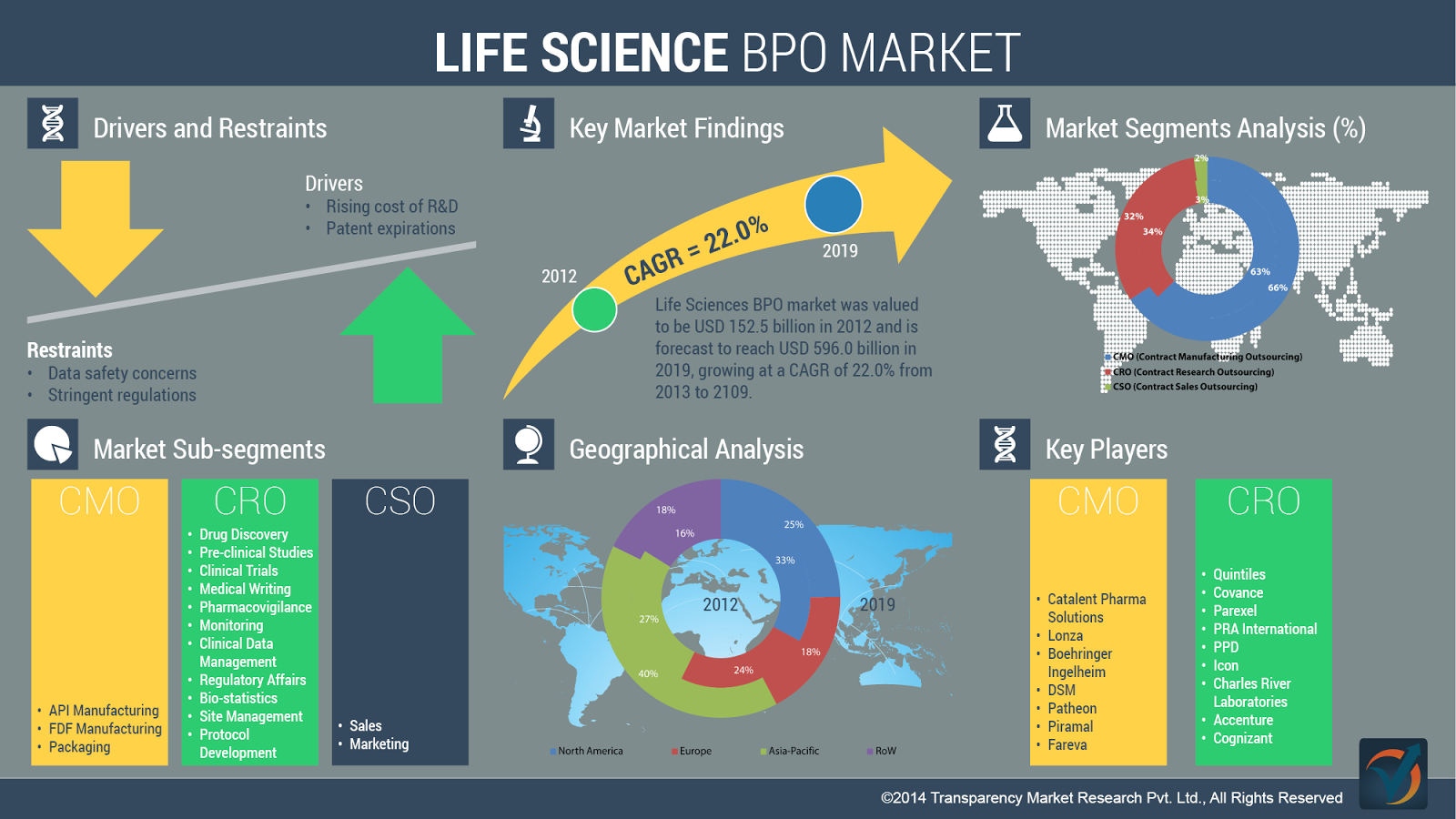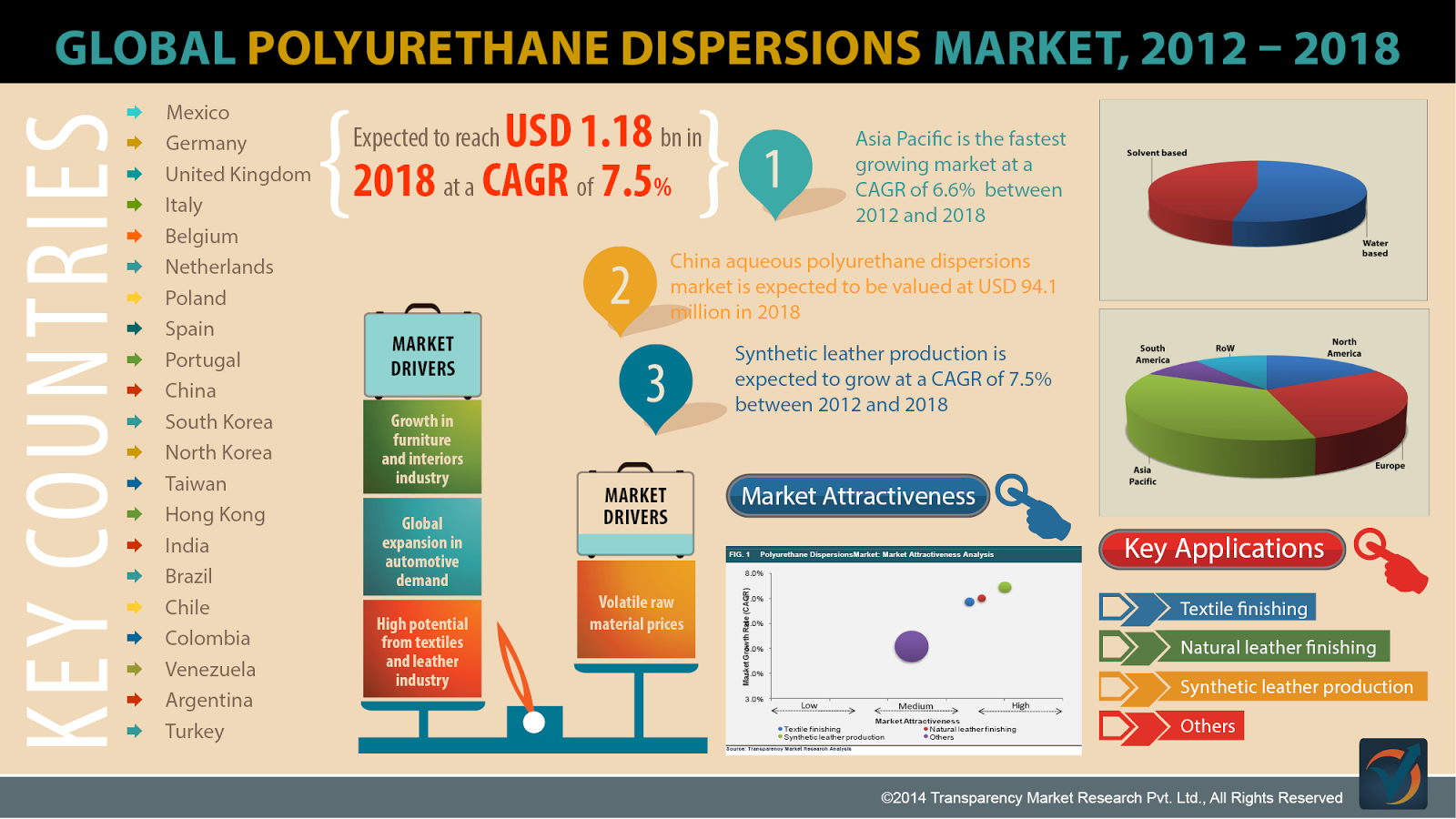According to a new market report published by Transparency Market Research “Process Spectroscopy Market (Technology Types - Near infrared (NIR) spectroscopy, Raman spectroscopy and Fourier Transform infrared (FT-IR) spectroscopy) Market - Global Industry Analysis, Size, Share, Growth, Trends and Forecast, 2013 - 2019,” the market was valued at USD 714.5 million in 2012 and is expected to grow at a CAGR of 7.4% from 2013 to 2019. North America was the largest contributor to Global process spectroscopy market in 2012. Asia Pacific region is expected to be the fastest growing market for process spectroscopy during the forecast period with a CAGR of 8.7% from 2013 to 2019. The rapid growth of process spectroscopy technologies in pharmaceutical and food and agriculture industries in Asia Pacific region, particularly in countries like China, Japan and India is driving the growth of process spectroscopy market in Asia Pacific region.
Advancement in technologies, demand for matching international quality standards and the cost and time saving approach of companies in various industries has increased the usage of process spectroscopy. Additionally, the implementation of process analytical technologies for pharmaceutical industry by FDA (Food and Drug Administration) in the United States is expected to fuel the growth of process spectroscopy market in North America region.
Browse the full report Process Spectroscopy Market:
Increasing adoption of Raman spectroscopy in pharmaceutical and food and agriculture industry is expected to raise the market share of Raman spectroscopy in global market. Raman process spectroscopy held 17.1% share of the total process spectroscopy market in 2012.
North America led the global process spectroscopy market in 2012 with the share of around 49% of the global market. This is mainly due to the presence of dominating players in these regions those are developing the products for various industries including oil and gas, pharmaceutical, polymer, chemicals and food and agriculture among others.
The global market for process spectroscopy was dominated by leading players such as Thermo Fisher Scientific, Inc. Bruker Corporation, Buchi Labortechnik AG, and Andor technologies which collectively accounted for more than 40% share in 2012. Other important players in the market include Foss A/S, Danaher Corporation, Shimadzu Corporation, Yokogawa Electric Corporation, Sartorius AG, Kett Electric Laboratory, Horiba Limited and ABB Limited among others. The competitive rivalry among these companies is high and is expected to remain the same over forecast period.
Browse the Press Release of this report:
The report studies the global process spectroscopy market, and provides estimates in terms of revenue (USD million) from 2012 to 2019. Market estimates are provided on the basis of technology, end-use industry and geography. The market has been segmented as follows:
Market Segmentation of Global Process Spectroscopy Market:
Process Spectroscopy Market, by Technology
- Near infrared (NIR) spectroscopy
- Raman spectroscopy
- Fourier Transform infrared (FT-IR) spectroscopy
Process Spectroscopy Market, by End-use Industry
- Polymer industry
- Oil and gas industry
- Pharmaceutical industry
- Food and agriculture industry
- Chemical industry
- Other industries (medical diagnostic, forensic and environmental)
Process Spectroscopy Market, by Geography
- North America
- Europe
- Asia Pacific
- RoW
About Us
Transparency Market Research (TMR) is a global market intelligence company, providing global business information reports and services. Our exclusive blend of quantitative forecasting and trends analysis provides forward-looking insight for thousands of decision makers. TMR’s experienced team of Analysts, Researchers, and Consultants, use proprietary data sources and various tools and techniques to gather and analyze information.
Our data repository is continuously updated and revised by a team of research experts, so that it always reflects the latest trends and information. With a broad research and analysis capability, Transparency Market Research employs rigorous primary and secondary research techniques in developing distinctive data sets and research material for business reports.
Contact
Ms. Sheela AK
State Tower,
90 State Street,
Suite 700,
Albany NY - 12207
United States
USA - Canada Toll Free: 866-552-3453
Email: sales@transparencymarketresearch.com
Website: http://www.transparencymarketresearch.com/
































